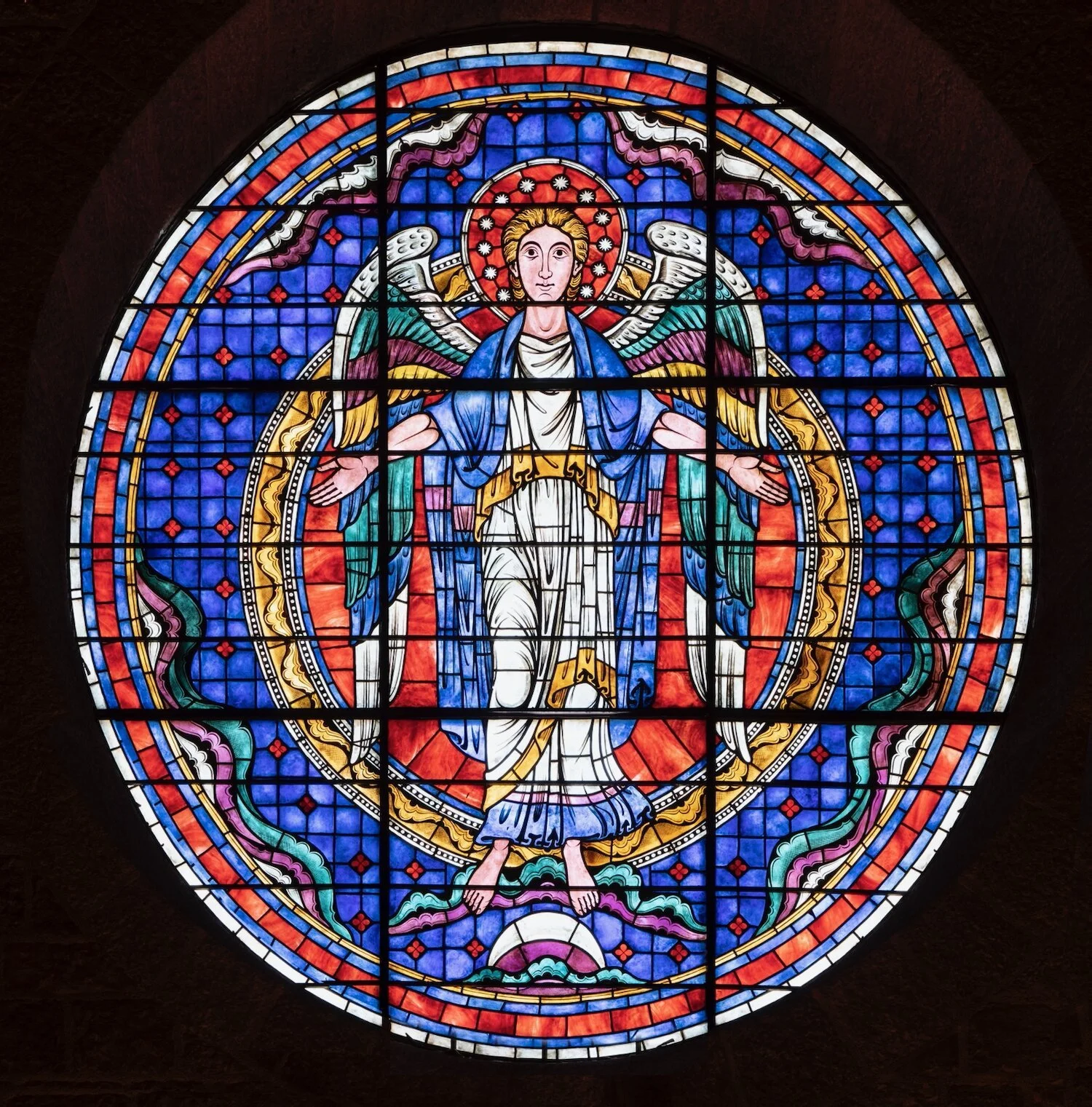New Church Art and Architecture Collection
The British sculptor John Flaxman (1755–1826) initiated a new tradition in funerary sculpture by portraying the human soul as a full-bodied adult, an idea he derived from the theological writings of Emanuel Swedenborg. This relief shows a man ascending to heaven as four spirits—two good and two evil—contend for his soul.
The Glencairn Museum collection includes many works created by artists inspired by the writings of Emanuel Swedenborg (1688–1772). Born in Stockholm to a prominent Lutheran bishop, Swedenborg spent many years as an influential scientist and philosopher. At the age of 55, after experiencing a series of religious visions, he devoted the rest of his life to writing a systematic theology.
Many painters, sculptors, writers, and poets were influenced by Swedenborg’s writings. His ideas about “correspondences” had an especially strong impact on certain artists. According to Swedenborg, everything in the natural world originates from a spiritual world; therefore, earthly forms and colors reflect deeper spiritual truths. Examples of 19th-century artists influenced by Swedenborg include John Flaxman (1755–1826), William Blake (1757–1827), Hiram Powers (1805–1873), and George Inness (1825–1894).
Raymond and Mildred Pitcairn were devoted followers of the New Church, a Christian denomination based on Swedenborg’s theology. They lived in the borough of Bryn Athyn, Pennsylvania, which was founded around those beliefs in the late 19th century. Raymond supervised the building of both Glencairn, his family’s home, and Bryn Athyn Cathedral, a New Church place of worship, working with artists and craftsmen to create hundreds of original artworks in stained glass, mosaic, stone, wood, and metal. He designed Glencairn to reflect the values that he and Mildred hoped would guide their family life. The house is decorated with inscriptions from the Bible and Swedenborg, and with visual symbols of the four “neighbors” or communities the family wanted to serve: Family, School, Country, and Church.
The Museum’s collection includes early design work for Glencairn and Bryn Athyn Cathedral. There are thousands of sketches, drawings, scale and full-size models for stained-glass windows, mosaics, capitals, reliefs, metalwork, and furniture that were later realized in a variety of materials.
This window in Glencairn’s Great Hall, made in the Bryn Athyn glassworks, features the Woman Clothed with the Sun described in the Book of Revelation (12:1): “Now a great sign appeared in heaven: a woman clothed with the sun, with the moon under her feet, and on her head a garland of twelve stars.”
Read about the New Church Art and Architecture collection in Glencairn Museum News:
Why Did Raymond Pitcairn Build Glencairn? From Cloister Studio to Castle
Glencairn’s 1796 Halfpenny Token: A 3D Video Rendering of the Earliest New Church Temple
One Hundred Years Ago Today: The Dedication of Bryn Athyn Cathedral
The Ceiling of Glencairn’s Great Hall: Construction and Decoration
“A Bower of Loveliness”: Glencairn Sculptures Used as Garden Decorations for a 1934 Wedding
The Adoration of the Shepherds: A Life-Size Nativity Painting at Glencairn Museum
Five Artists Inspired by the Writings of Emanuel Swedenborg (1688–1772)
An Interview with Jens Langlotz, Bryn Athyn’s Master Stone Carver
A Heavenly Light: The Bryn Athyn Stained-Glass Factory and Studio
From the White House to Gettysburg: Pitcairn-Eisenhower Nativity Scenes
One Hundred Years Ago Today: Laying the Cornerstone for Bryn Athyn Cathedral
The Case of the Mysterious Disappearing—And Reappearing—Medal
Exhibition: The Apocalypse of John: Twenty-five Paintings by G. Roland Smith
Announcing the reprint of Bryn Athyn Cathedral: The Building of a Church

